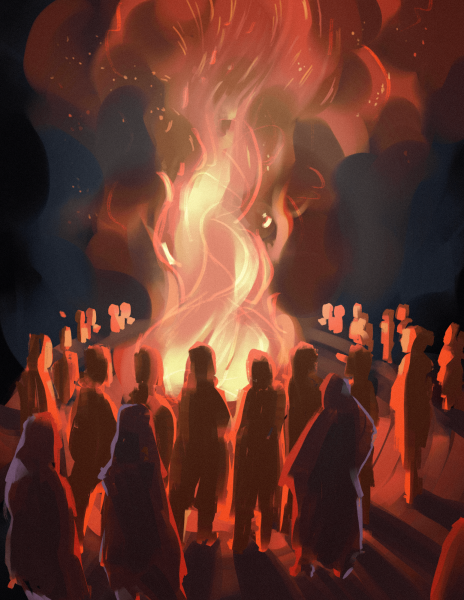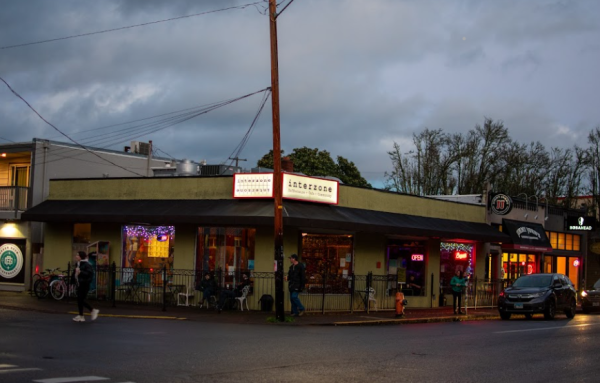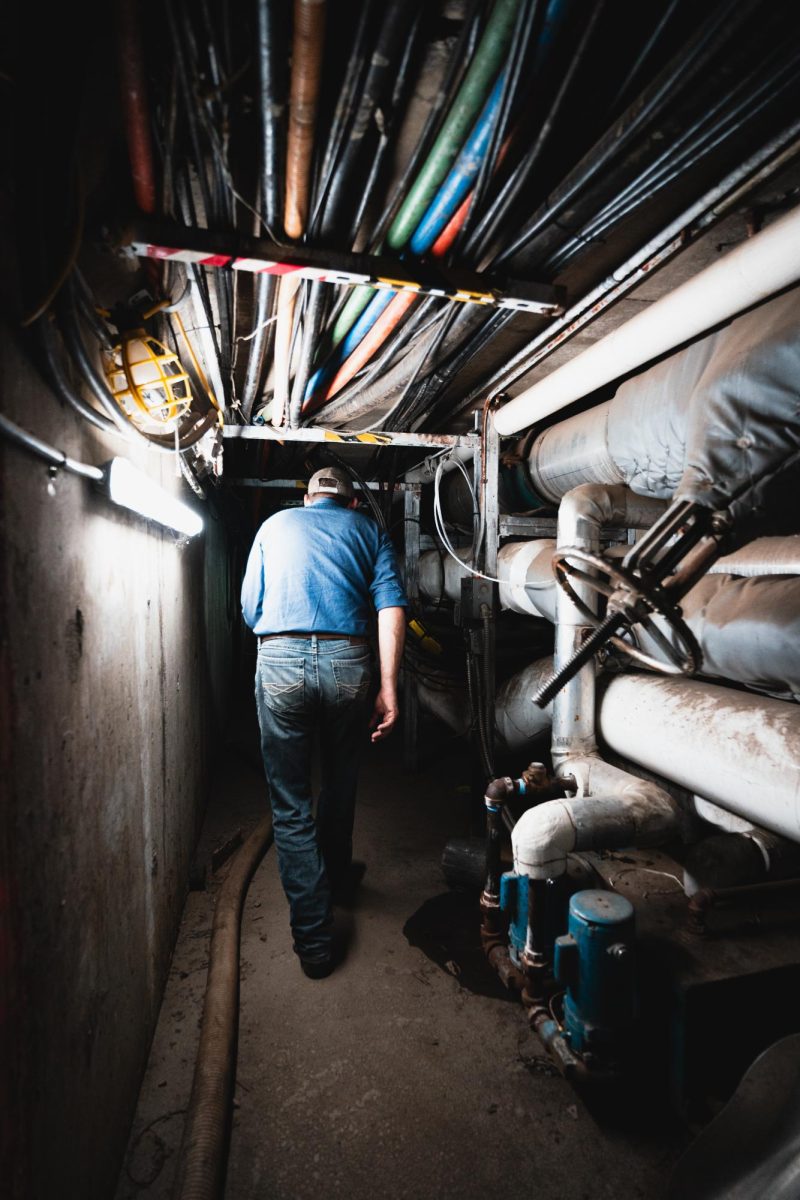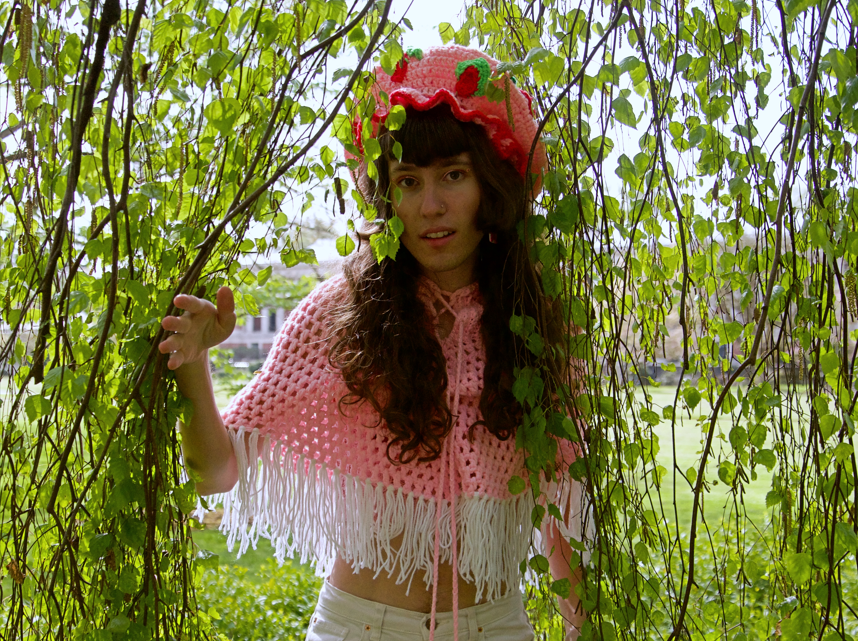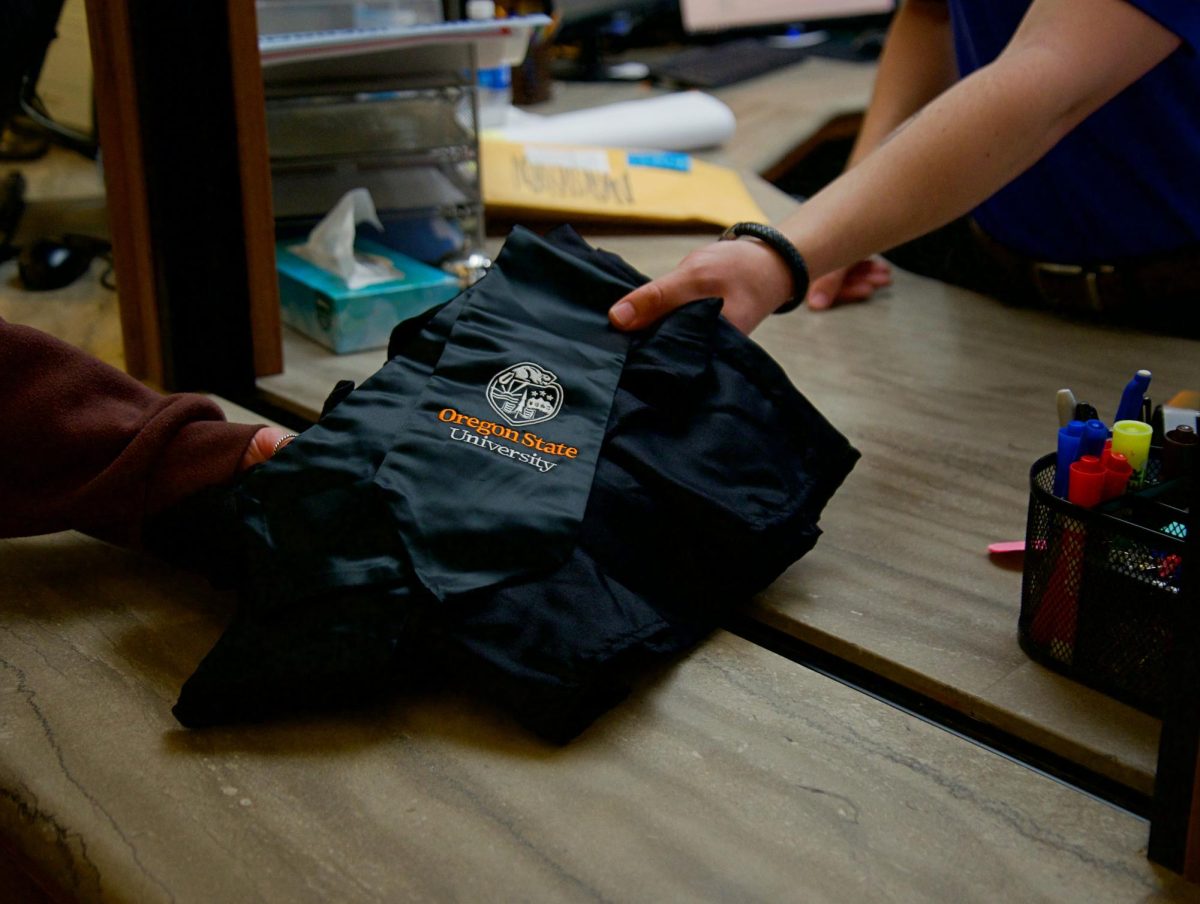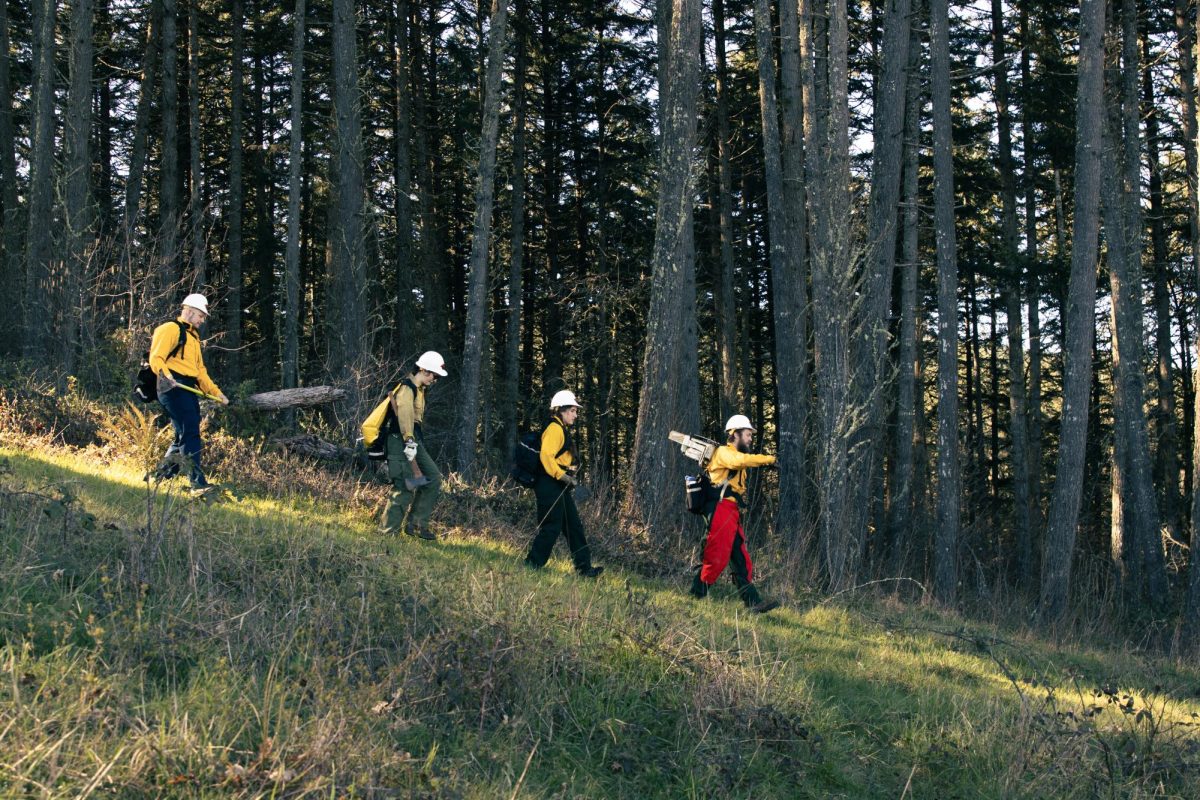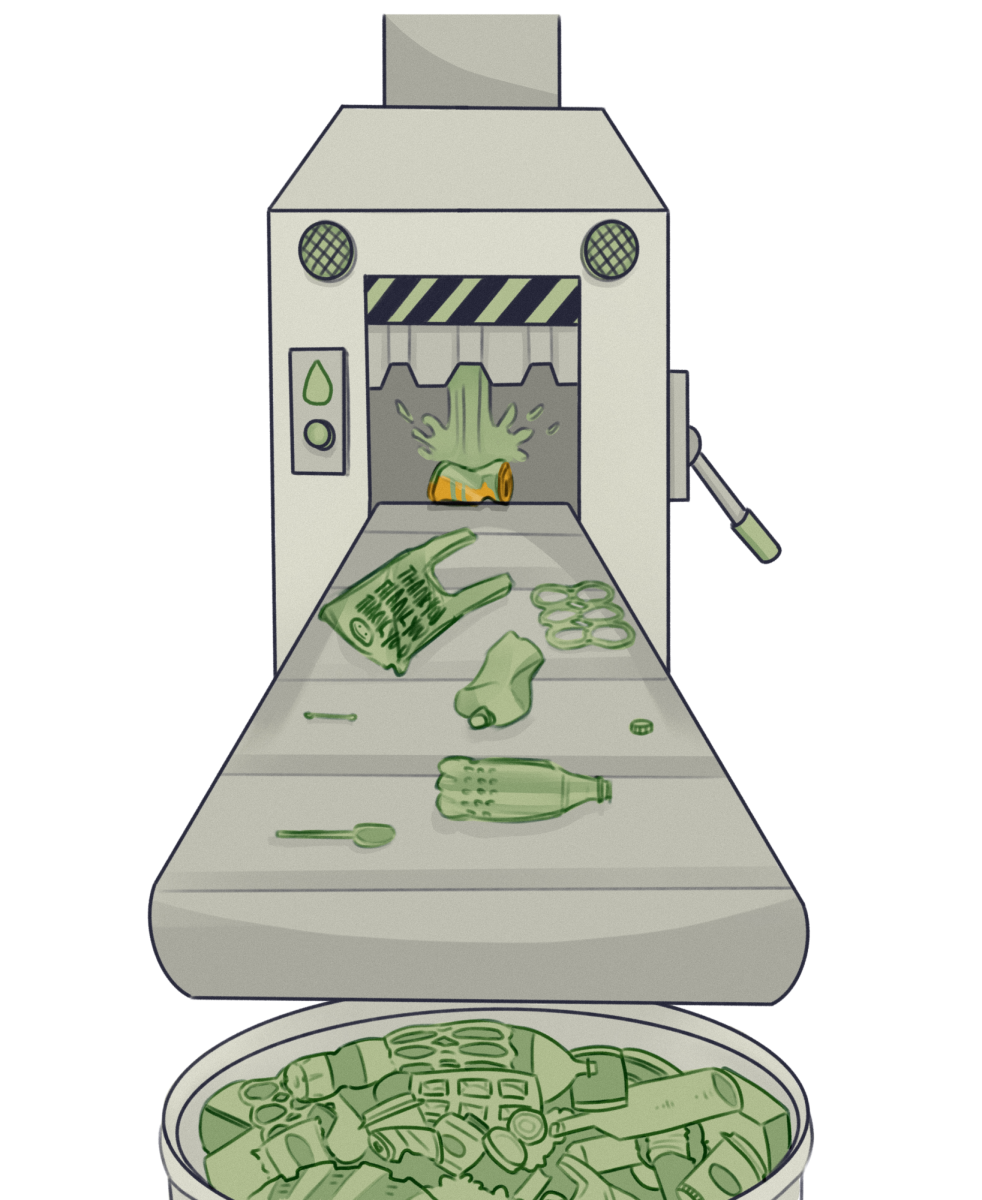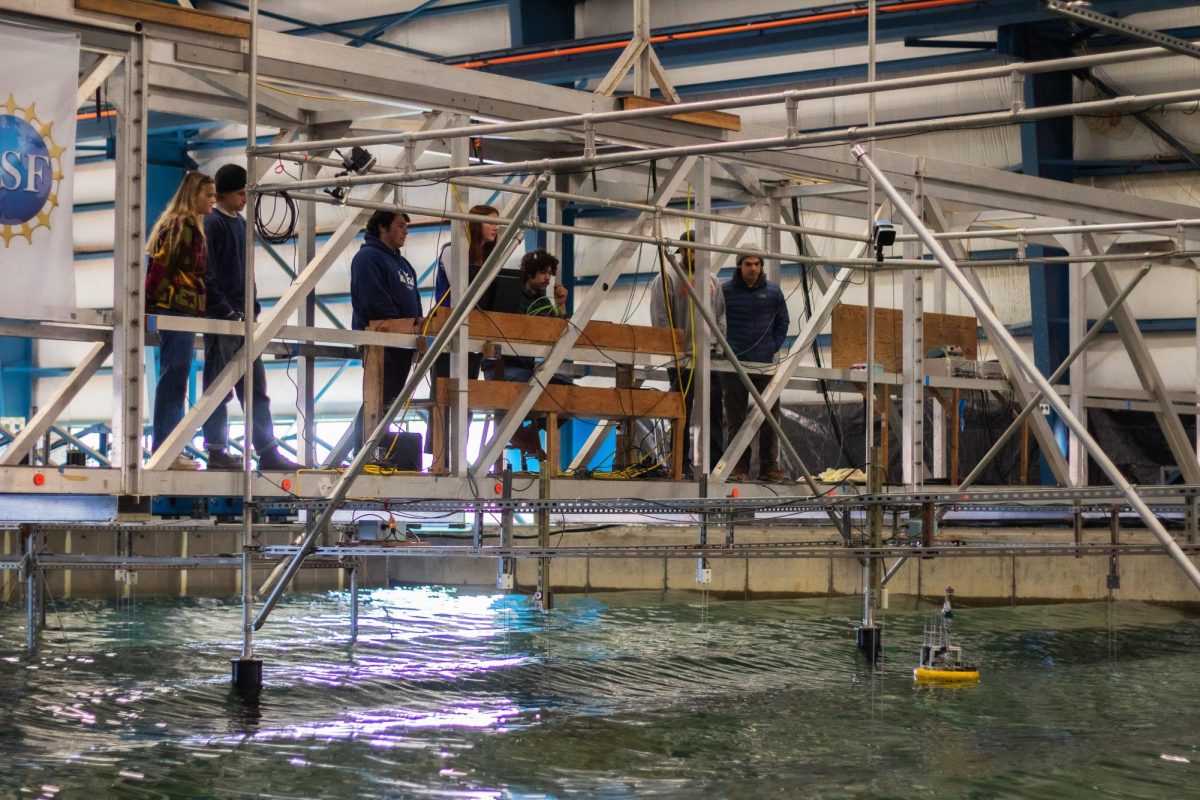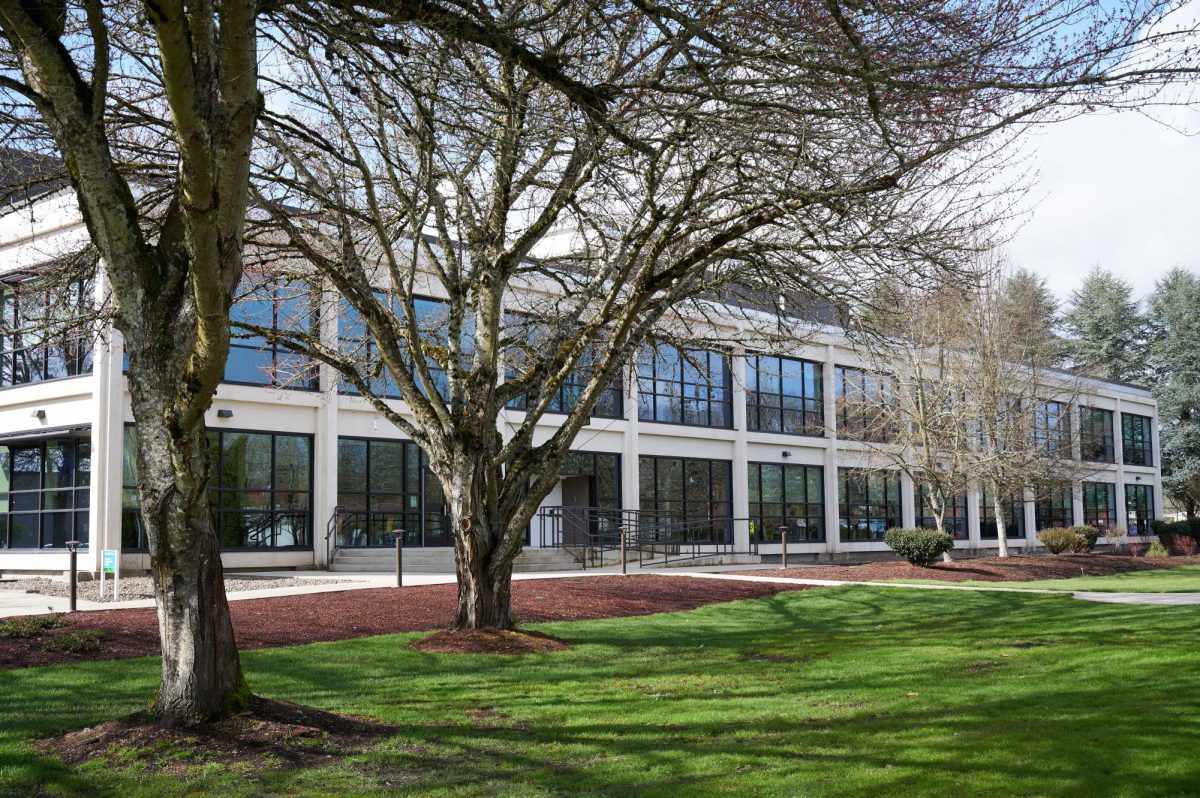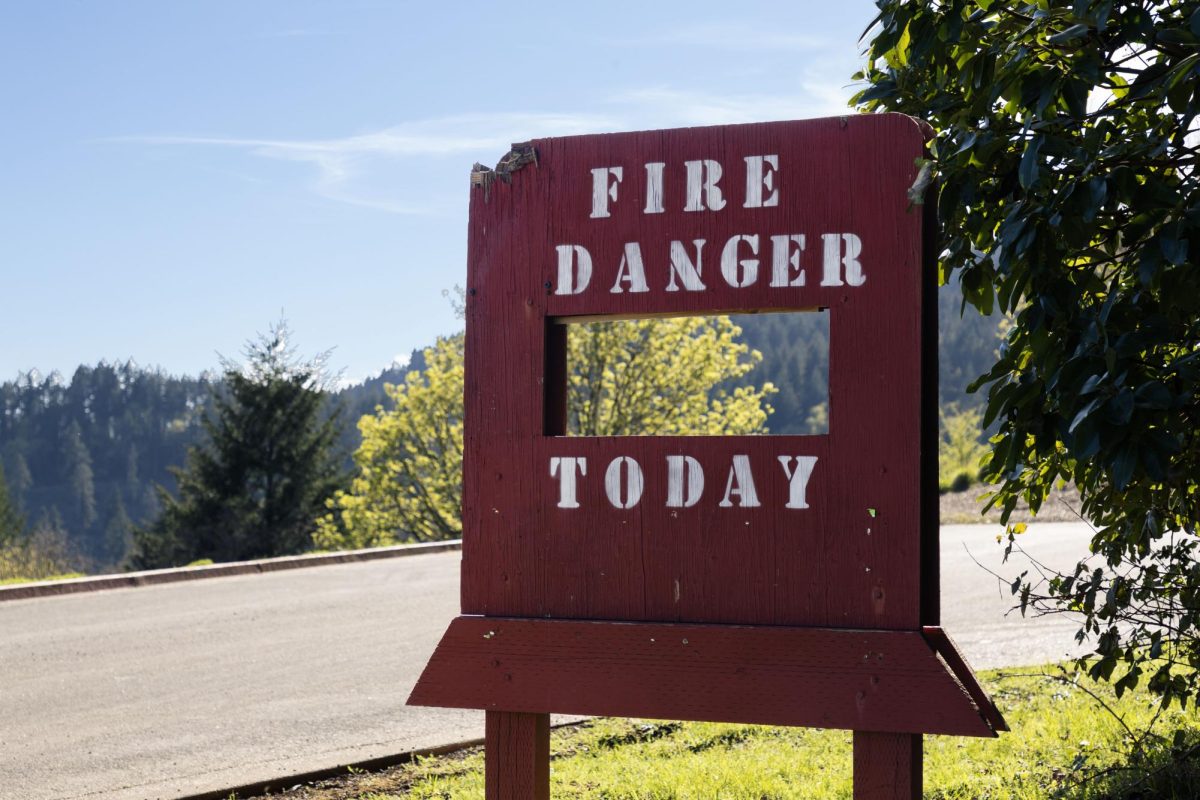Deep underneath Oregon State University’s main campus, with its familiar tree-lined walkways and old, brick buildings, lies a hidden, unworldly expanse: Just over three miles of tunnels.
Step down into the tunnels and it’s like you’ve been transported to another world – hot, dark and damp. As far as one can see, a miles-long stretch of tunnel extends into the dimly-lit distance.
To many, the tunnels are unknown, but to those who are aware of them, these tunnels bring about a sense of intrigue, mystery or confusion. A lengthy list of conspiracy theories and misconceptions about the history and purpose of the tunnels is traded between students.
“I’ve heard that they are for the nuclear transport from the Radiation Center,” said Les Walton, energy operations manager for the Energy Center. “I’ve heard that they’re actually sewers… I have heard that there’s bodies down there, there’s old professors that live down there, that people use the tunnels when it’s snowing so that people can get from one side of campus to the other.”
The storied theories are “furthest from the truth,” Walton said.
In reality, the system of tunnels’ true use is less mysterious.
The tunnels, managed by OSU’s Energy Center, are utility tunnels, built to house and protect steam and electrical lines as well as the communications systems for campus, according to Walton. They provide hot and cold water along with some energy to campus.
Once a week, Walton walks the tunnels, looking for any leaks, discrepancies or structural problems.
“It’s myself and Devin, my lead operator,” Walton said. “We’re the only two that go down to the tunnels on a regular basis and so I know just about every square inch of the entire tunnel system. If there’s any major issues, we’ll fix it ourselves or I’ll hire contractors to assist us with the repairs”
Walkthroughs can at times be unpleasant. Standing water is common, especially when it rains, and temperatures can soar above 100 degrees Fahrenheit.
“In a lot of the tunnels, you know the older section of tunnels out there, it’s still dark and dank,” said Devin Lee, co-generation engineer for the Energy Center. “It’s hot, depending on the time of the year. Sometimes there’s water standing on the floor.”
The tunnels additionally are used for easy maintenance and expansion of the campus.
“If we’re building new buildings, we’re going to do a whole lot of underground work,” Walton said.
“The tunnels mean that we can just hop in and make repairs or additions pretty easily,” said Walton.
The age of the tunnels vary depending on their location under campus.
The oldest tunnels originated with the old Heating Plant, built back in the 1890s,as direct barrier pipes for steam distribution. However, most of the tunnels, which run under Jefferson Way, were built in the 1950s. The newest stretch of tunnels, located under Campus Way were built within the last 10 years.
They also vary in height. Most of the tunnels are full-height “walking tunnels,” measuring six feet or taller, while others are shorter, called “half-rounds,” which are not tall enough for someone to walk through.
The only way to access them is through the Energy Center, which holds all the keys. In order to enter them, one must watch a safety training video, whether or not they are OSU personnel or from Pacific Power.
Despite this though, students will occasionally find their ways down to the tunnels.
“I would recommend they not do that, mainly because of the dangers down there,” Lee said. “There’s potential for a big steam leak all of a sudden and that steam displaces oxygen. So if someone was at the wrong place at the wrong time, all of a sudden you don’t have any air to breathe.”
To avoid the dangers, Lee recommends requesting a tour if someone is interested in exploring the tunnels.
“I mean, we know what to look for,” Lee said. “If there’s anything dangerous, we’re not going to take you down there if there’s a potential for dangers.”
They also sometimes provide tours to other universities, classes at OSU or schools in Corvallis.
“If somebody wants to take a look at (the tunnels), I’m always willing to take somebody down,” Walton said.To schedule a tour, Walton can be reached at [email protected].



